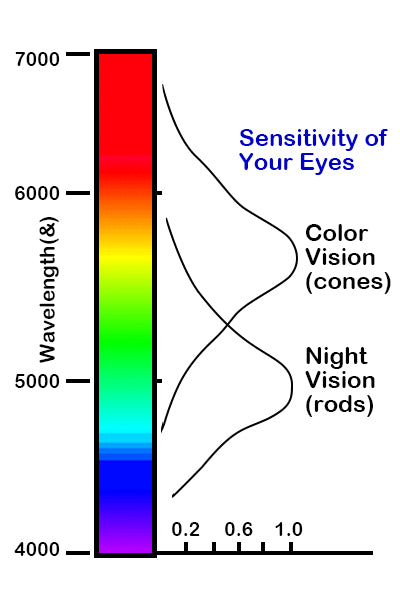Red and Near-Infrared Light Therapy for Our Health
People are often surprised to hear that one of the most effective and least invasive methods of promoting physiological restoration and healing while reducing symptoms such as pain, inflammation, lethargy, and visible signs of aging is a natural remedy that has been shown to be effective for a variety of conditions and diagnoses. Red and near-infrared light therapies have been used for over a century for their promotion of natural healing and stimulation of restorative cellular processes, and several medical disciplines have even begun studying its uses for incorporation in modern medicine and treatments of pathologies and symptoms. But, despite its proven efficacy and burgeoning popularity, red and near-infrared light therapies are still largely unknown to those dealing with chronic pain or skin conditions. So, what exactly are these therapies, how do they work, what can they treat, and are they truly safe to use?
Understanding the Differences Between Light Therapy and Near Infrared Therapy
The most important thing to know when understanding the differences between red light and near-infrared light therapy is that light is a spectrum. All electromagnetic radiation—such as microwaves, radio waves, and gamma rays—have a specific wavelength that defines them as they travel through our world. These different wavelengths can be absorbed and interpreted by any number of elements—be they cells, signal towers, or inanimate objects. Visible light is also a part of the electromagnetic spectrum, and it is the only type of electromagnetic radiation travelling on a wavelength that our eyes can see (hence the name visible light).
Each color on the visible light spectrum has a slightly different wavelength ranging from approximately 380 to 750 nanometers, with red light having the longest wavelength. Infrared light is the next-longest wavelength after visible light on the electromagnetic spectrum, ranging from 700 to 1100 nanometers, but its longer wavelength means that it is not visible to the human eye. However, we can feel infrared light through our skin as heat. At its most basic form, infrared light is radiant energy emitted by almost all objects in our universe, but specifically the sun and fire.

Red light and near-infrared light therapies may seem like similar concepts, but in practice their mechanisms of action as treatments are quite different.
Red light’s shorter wavelength means that it cannot penetrate very deeply into the surface of the skin, and is therefore typically used to treat superficial skin conditions, while the opposite is true of near-infrared light. Because longer wavelengths can penetrate more deeply, near-infrared light’s energy can be absorbed by cells much farther inside the body, making this form of light therapy ideal for pain relief and the stimulation of healing and regeneration that occurs far below the skin. Similarly, although most wavelengths of light can penetrate our bodies to some extent, red light’s longer wavelength makes it ideal for entering and stimulating the cells of our skin. The cells of our body are made so that they can absorb the different wavelengths of light, and these wavelengths produce differing effects on the cells that they reach.
Although both red and near-infrared light therapies operate using the same principles of wavelength and cellular penetration to induce a physiological effect, the fact that they do have such drastically different wavelengths means that their ultimate difference lies in which parts of the body they affect, as well as the effects themselves. Because of these differences, each of the two therapies have unique purposes and applications within the realms of rehabilitation, pain-relief, and holistic wellness. However, both therapies operate by stimulating and strengthening the mitochondria of body and skin cells, causing them to increase energy production and work more efficiently. This ultimately results in the restorative benefits observed in either the skin or internal viscera of the body.
Image Source From WINDOWS TO THE UNIVERSE By Randy Russell
Near Infrared Therapy VS Red Light Therapy
Because the two forms of light therapies are emitted at different wavelengths, different cells in your body will be able to receive and benefit from the lights depending on which wavelength is being received where. As previously mentioned, near-infrared light's longer wavelength means that it can penetrate much deeper into the body, allowing it to stimulate the cells that make up the soft tissues, muscles, joints, and even bone. The molecules that are involved in cellular energy metabolism and energy production can be stimulated by near-infrared light, thus increasing these actions and their mechanisms that can ultimately promote healing and pain relief. This means that near-infrared light therapy is generally used in applications for holistic treatment of internal and physiological complaints, as well as joint and muscle rejuvenation and pain relief.
Conversely, visible light’s shorter wavelength relative to near-infrared light means that it doesn’t penetrate deeper than the skin cells. Although all wavelengths of visible light can be absorbed in some capacity by the cells of the skin, red light boasts the largest wavelength on the visible light spectrum, meaning that it can penetrate the farthest into the multiple layers of the skin. The skin is composed of three layers: the outer epidermis, middle dermis, and inner subcutaneous layer. Each layer carries out a vital physiological function for the health of the skin, and red light’s ability to stimulate cells across all three layers means that any number of symptoms dealing with the holistic wellness of the skin can be addressed through red light therapies. Because of this, red light therapy is generally used for wellness programs targeting anti-aging, wrinkle reduction, superficial wound healing, and overall regeneration of the body's protective outer layer. However, the skin does contain afferent neuronal endings as well as a network of capillaries, which means that the stimulation offered by red light therapies can also assist in pain reduction and decreased inflammation, especially when used in conjunction with near-infrared light therapies.
The Effects of Red and Near-Infrared Lights on Different Parts of The Body
Just because red light therapy cannot penetrate much deeper than the skin does not diminish the usefulness or potential outcomes that can be enjoyed following a red light therapy regimen. The skin is the largest organ in the body and the effects of red light therapy for rejuvenation, healing, and anti-aging of the entire body as a whole cannot be understated. When used to treat skin conditions, red light stimulates the superficial skin cells to increase collagen and elastin production. Collagen and elastin are vital components of skin texture, tone, and resiliency and their production is crucial to anti-aging and restorative therapies taking place on the skin. In some instances, the application of red light therapies has been shown to reverse signs of sun damage and acne scarring—damage that is usually considered permanent.
Additionally, skin conditions and damages that are typically addressed with topical creams or other pharmacological programs can drastically benefit from the rejuvenation and increased cellular functioning that red light therapies stimulate since red light can penetrate deeper into the skin than the creams can absorb, stimulating cellular functioning from the inside out. Red light therapies have proven themselves to be a vital element of healing for any number of superficial and skin-related conditions, including wrinkles, inflammation, pain, and wound healing.

Skin Issue

Pain Issue
While red light is generally reserved for these surface ailments, near-infrared light is a general treatment that can be used to provide symptom relief for an incredibly wide variety of issues and complaints. Due to its stimulating effect on the cellular mechanisms within the body, near-infrared light therapies have enormous power to increase the bodily functions that promote overall healing, restoration, and repair. Those seeking relief from physiological ailments such as cardiovascular health, general pain, inflammation, and suppressed immune and lymphatic function should consider near-infrared light therapies to address these issues. Additionally, near-infrared light therapy can address more general wellness matters and provide stimulation for the metabolism, cellular regeneration, energy production, wound recovery, and joint and muscle pain. And while these are just some of the benefits that you can expect to see from engaging in near-infrared light therapy, more and more clinicians are recognizing the restorative abilities that this natural remedy offers, and clinical studies are being conducted to continue to evaluate additional benefits that near-infrared light treatment might confer.
At the end of the day, the bottom line of healing is maintaining cellular health. If your cells are not operating at their full capacity, or if an illness or diagnosis is suppressing the functioning of your immune system, you aren’t going to feel your best. Red and near-infrared light therapies put the focus on healing by starting from the root of the problem. Rather than getting stuck in an individual symptom relief cycle that could drag on for ages and might not ever have an end, these light therapies go straight to the source of the problem—quite literally! Supporting and stimulating your body’s cells will allow them to operate efficiently once again, ultimately increasing the production of molecules, hormones, and chemicals that contribute to your overall health and wellbeing. When cells are exposed to the restorative benefits of light therapies, your entire bodily function is affected, and you can feel the difference.
Application of Red & Near-Infrared Light Therapies
Although the physiological effects of and general uses for red and near-infrared light therapies are largely different, this does not mean that they are mutually exclusive. In fact, some of the restorative benefits of both therapies overlap, and having the same effect targeted both superficially and deep in the body can increase the overall effects and final outcomes. Because of this, many people prefer to engage in red and near-infrared light therapies simultaneously and enjoy the way they work in conjunction with one another in order to reap the maximum amount of benefit from the therapy.
Pain relief and anti-aging regimes in particular are more powerful when red light therapy is used in conjunction with near-infrared light and using a combination of both will always act to promote general wellness and stimulate greater healing and regeneration. Those that are seeking natural pain relief will generally benefit from light therapy that delivers a higher ratio of near-infrared light waves because of the deep muscle penetration and stimulation of blood flow and healing, while those seeking anti-aging and skin rejuvenation usually undergo therapies with a higher percentage of red light due to its collagen and elastin stimulating properties.
Because of the painless, natural, and holistic manner in which red and near-infrared light therapies operate, they are ideal candidates to be used in conjunction with each other, as well as to promote general wellness and healing without a concrete diagnosis or pathology. There is a plethora of light therapy devices available, with any number of combinations of red and near-infrared lights to choose from. While some laser therapies that are used to stimulate skin repair to impart anti-aging benefits work by damaging the top layer of the skin to create controlled damage to the epidermis, red light and near-infrared light therapies function by directly stimulating cells without having to invoke any damage whatsoever. Because it is non-invasive and involves no contact, application of light therapies could not be easier.
Why Should You Try Red & Near-Infrared Light Therapies?
For now, however, red and near-infrared light therapies are vitally important to those who rely on them due to their myriad of rejuvenating properties and stimulation of holistic physiological wellness. From anti-aging to pain relief, red and near-infrared light therapies are incredibly important in not only managing unpleasant symptoms but eliminating them by getting to the cellular cause of the discomfort.
